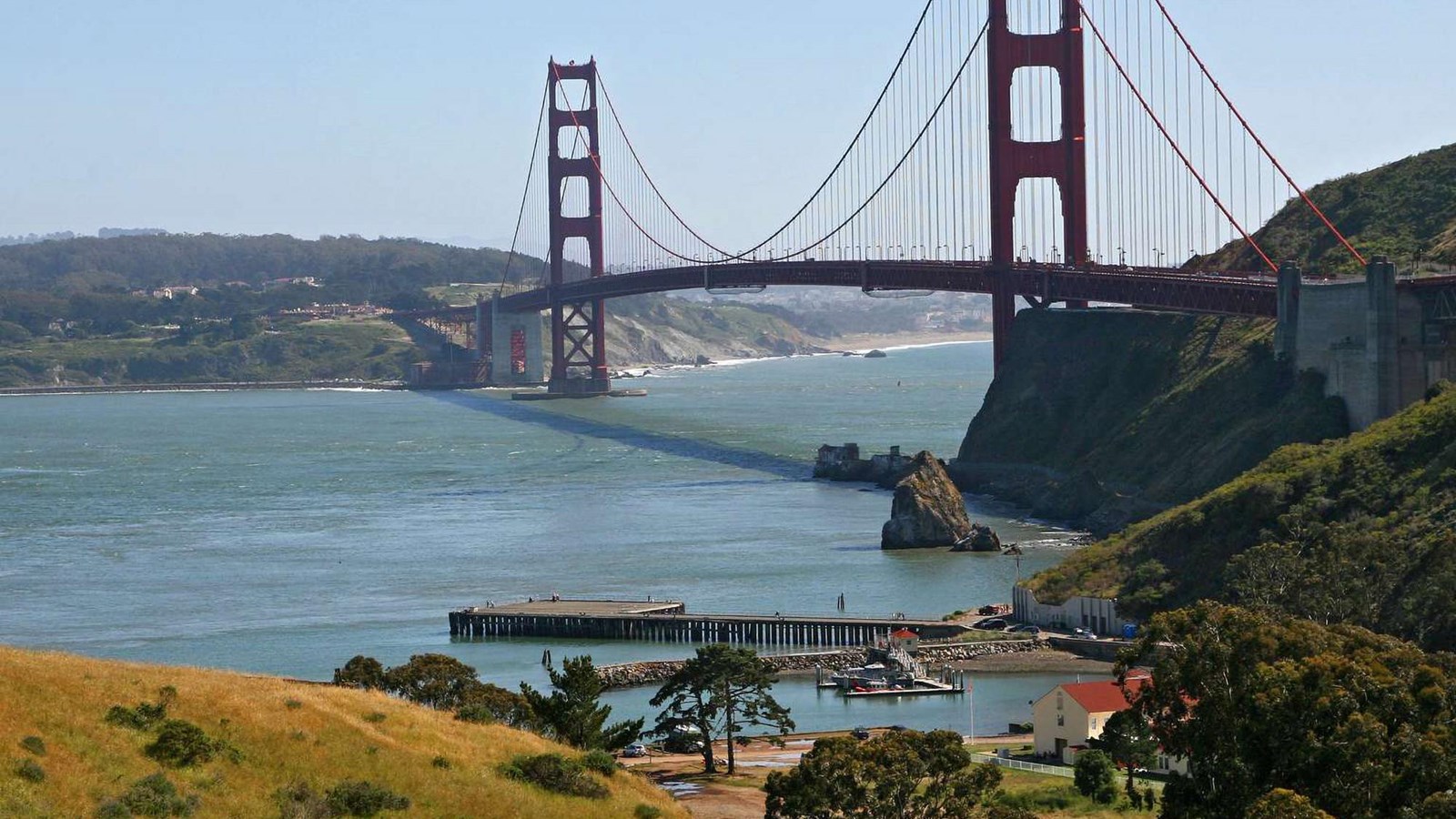Last updated: October 10, 2024
Place
Fort Baker

Benches/Seating, Dock/Pier, Historical/Interpretive Information/Exhibits, Parking - Auto, Picnic Table, Scenic View/Photo Spot
Fort Baker, the final "Post-to-Park" conversion in the Golden Gate National Parks, is a 335 acre former 1905 US Army post located immediately north of the Golden Gate Bridge. There are more than 30 historic army buildings, many clustered around a main parade ground. Today, these buildings are home to a number of park partners including Cavallo Point Lodge, the US Coast Guard and the Bay Area Discovery Museum. There's also a harbor, several historic gun emplacements and trails.
A cell phone tour begins near the kiosk in front of the Bay Area Discovery Museum. The recorded audio provides additional information about the history and environment around Fort Baker. A map of the tour is available through park partners, Bay Area Discovery Museum, and Cavallo Point Lodge registration.
Fogless Wonder
Much of San Francisco and points north of the bay fall under the realm of the frequent visitor in gray, Karl the Fog. Karl is fond of the Golden Gate Bridge and the bay; large swaths of the city disappear within his dense shroud. Although a ridge to the west keeps him from Fort Baker, it makes the view from Fort Baker a bit eerie. He's a product of cold ocean water and warmer landward moving air coming together at the Golden Gate. When he shows up for several days on end, Karl can feel a lot like the house guest on your couch who has outstayed their welcome.
Bay Natives: The Coast Miwok
The Miwok and their ancestors made their home in areas north of the Golden Gate, primarily in Marin County and southern Sonoma County, for 10,000 years before any Europeans arrived. They were organized into small, politically independent societal groups that moved annually between temporary and permanent village sites determined by seasonal hunting, fishing and resource gathering. Because of their proximity to the Pacific Ocean, the Coast Miwok relied heavily on resources like kelp and shellfish for food.
A few years after their arrival to the region, the Spanish began a cultural takeover of the indigenous peoples meant to destroy the native way of life. By 1810, a combination of indoctrination, enslavement and diseases brought by the Spanish led to decimation of the Miwok and their culture. Yet, despite this attempt of systematic destruction, the Miwok endured. Today, they live throughout the bay area and are committed to the preservation of their culture. Language revitalization, protecting ancestral sites, traditional plant use, storytelling, dance, song and basket weaving are all aspects of restoration efforts.
Mexican Era Rancho Sausalito
Although the Spanish colonized this region in 1776, the area remained largely uninhabited even after the Mexican War of Independence, which was fought from 1810 to 1821. Towards the mid-1800s, the grasslands here were gaining recognition as primo territory for cattle ranching. The ranch hands were known as los vaqueros and were some of America's first cowboys. In the late 1830s, William Richardson, a one time cabin boy who worked his way up to Port Captain, became the first settler to put down roots in the area north of the Golden Gate. Richardson married the Commandant of the Presidio's daughter and was awarded a land grant, giving him the rights to these lands. He established Rancho Sausalito, his cattle ranching operation. Later, this land would become Fort Baker.
Establishing Fort Baker
In the mid-1800s, the US Army set about modernizing the harbor defenses of San Francisco. The brick forts that had been the standard structures for the first half of the century were now vulnerable to rifled artillery attack. The army therefore developed a more modern system that relied on hidden batteries and "disappearing" guns. At first, the men who operated and maintained this new weaponry slept in tents, but cold fog and strong winds made more permanent housing a necessity, hence the construction of Fort Baker in 1901.
Fort Baker Defenses During WWII
As the country began to mobilize for war, the army created the Harbor Defenses of San Francisco, a system with operational command over many San Francisco army posts, including Fort Baker, Fort Barry and Fort Cronkhite. The Harbor Defenses of San Francisco was responsible for ensuring the safety of friendly shipping traffic and defending the coastline from enemy naval attack. The entrance to the bay was lined with underwater mines, which were armed by hand by soldiers here at Fort Baker. Past the mines, closer into land, was an antisubmarine net protected by the 3-inch rapid fire guns at Battery Yates.
